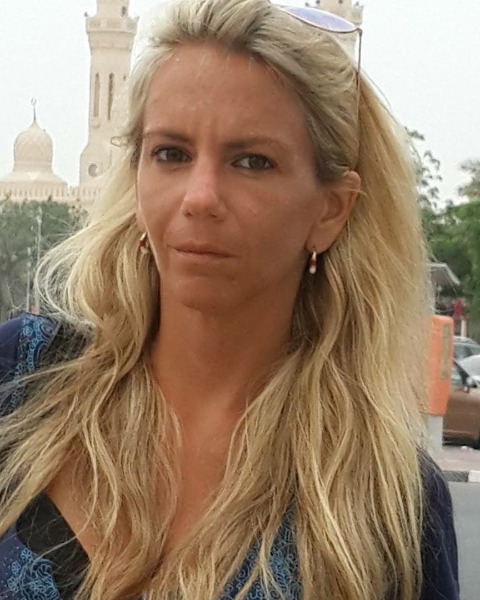Program Evaluation
Presentation Type: Virtual Poster
Session: Section on Global Health Program
Vision Screening Program in Children from 4 to 16 Years Old, Neuquen, Argentina
Background: Impaired vision has a negative effect on quality of life and restricts equitable access and achievement in education and the workplace. Early childhood is a crucial period for identifying visual impairment. Visual cortex plasticity progressively diminishes after age 2 years. Visual stimulus deprivation between birth and age 8 years can lead to amblyopia if not managed promptly.
Sight disorders are prevalent in Argentina, affecting 15 to 25% of school-aged children. Because there had been no program for eye care in Añelo, Sauzal Bonito, PIN and Rincon de los Sauces, the areas served by Baylor Argentina, we sought to develop a comprehensive eye care program for children.
Methods: The goal of our program was to establish a comprehensive vision-screening program combining screening, ophthalmological examination and eyeglasses prescription. We initially identified and engaged stakeholders, including health centers, schools, summer camps and local social clubs. Together we identified and secured resources for logistics, equipment and personnel. The process for the “Vision Screening Program” included three visits. Children were first screened by Baylor´s pediatrician. Those with abnormal screening exams saw an ophthalmologist also provided by Baylor. Finally, eyeglasses were dispensed to those who needed them. Fundación Baylor Argentina provided eyeglasses to children without medical coverage or with social monitoring.
At the beginning, screening occurred in schools. We then expanded to kinder, clubs and health clinics including infants as young as 9 months. Initially, we used the Snellen chart to screen. It is easy to use but lacks specificity. False positive screening tests resulted unnecessary referrals to the ophthalmologist. In 2019, we acquired a Welch Allen refractor, which significantly improved the accuracy of the exams.
Results: From January 2018 to June 2021, 2645 children between 4 and 14 years old were screened. Two hundred eighty-eight (14%) children had visual acuity defects and were referred to the ophthalmologist. Forty-seven percent required eyeglass prescriptions. Refractive error was diagnosed in 80% with 44 children having severe amblyopia.
Conclusion: The prevalence of sight disorders in our communities is consistent with data from Argentina. Effective collaboration between stakeholders allowed us to identify and address challenges and expand into new communities. Next steps are to maintain the program and explore the impact that the program has on academic performance
Sight disorders are prevalent in Argentina, affecting 15 to 25% of school-aged children. Because there had been no program for eye care in Añelo, Sauzal Bonito, PIN and Rincon de los Sauces, the areas served by Baylor Argentina, we sought to develop a comprehensive eye care program for children.
Methods: The goal of our program was to establish a comprehensive vision-screening program combining screening, ophthalmological examination and eyeglasses prescription. We initially identified and engaged stakeholders, including health centers, schools, summer camps and local social clubs. Together we identified and secured resources for logistics, equipment and personnel. The process for the “Vision Screening Program” included three visits. Children were first screened by Baylor´s pediatrician. Those with abnormal screening exams saw an ophthalmologist also provided by Baylor. Finally, eyeglasses were dispensed to those who needed them. Fundación Baylor Argentina provided eyeglasses to children without medical coverage or with social monitoring.
At the beginning, screening occurred in schools. We then expanded to kinder, clubs and health clinics including infants as young as 9 months. Initially, we used the Snellen chart to screen. It is easy to use but lacks specificity. False positive screening tests resulted unnecessary referrals to the ophthalmologist. In 2019, we acquired a Welch Allen refractor, which significantly improved the accuracy of the exams.
Results: From January 2018 to June 2021, 2645 children between 4 and 14 years old were screened. Two hundred eighty-eight (14%) children had visual acuity defects and were referred to the ophthalmologist. Forty-seven percent required eyeglass prescriptions. Refractive error was diagnosed in 80% with 44 children having severe amblyopia.
Conclusion: The prevalence of sight disorders in our communities is consistent with data from Argentina. Effective collaboration between stakeholders allowed us to identify and address challenges and expand into new communities. Next steps are to maintain the program and explore the impact that the program has on academic performance

Andrea E. Imsen
Pediatrician
Fundacion Baylor Argentina
neuquen, Neuquen, ArgentinaDisclosure: No Financial Relationships Disclosed
